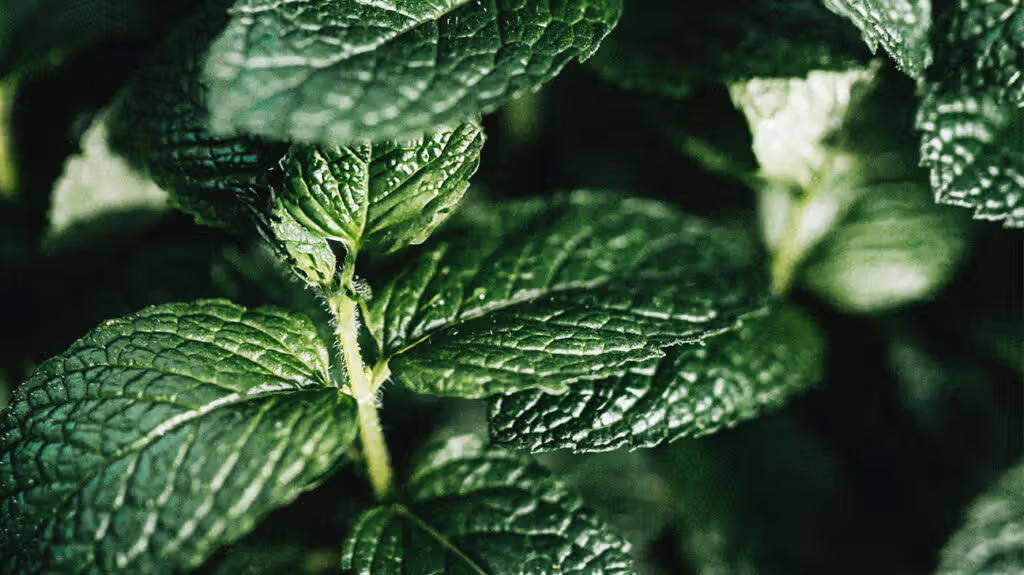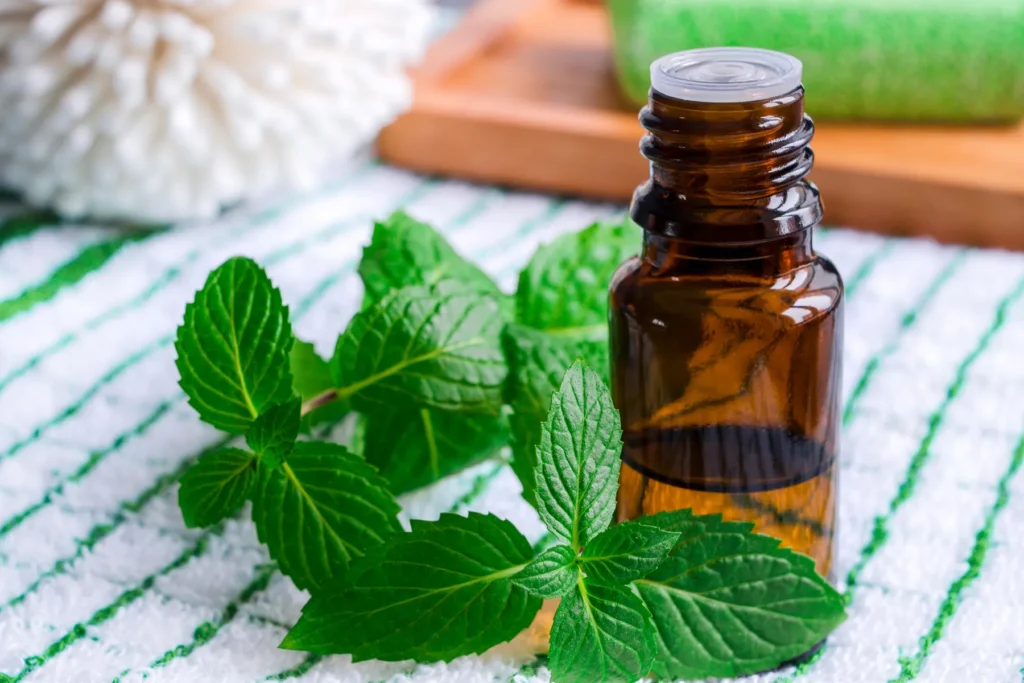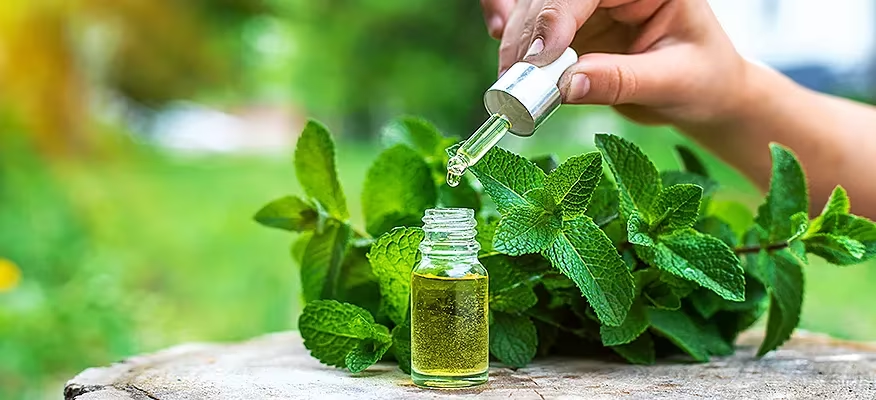Introduction
Mint is one of the most popular and versatile herbs in the world, valued for its refreshing aroma, cool flavor, and impressive health benefits. For centuries, it has been used in both culinary and medicinal traditions across various cultures. Rich in essential oils, vitamins, minerals, and antioxidants, mint offers a wide range of therapeutic effects — from aiding digestion and soothing headaches to relieving stress and refreshing the mind. Whether consumed as tea, used in aromatherapy, or applied topically, this plant provides natural relief and revitalization.
In this article, we’ll explore the properties of mint, its scientifically backed health benefits, common uses, and important precautions to consider. By the end, you’ll understand why mint is more than just a kitchen ingredient — it’s a small green powerhouse for overall wellness.

Mint Composition and Active Compounds
Mint belongs to the Mentha genus, which includes many aromatic species such as peppermint (Mentha piperita), spearmint (Mentha spicata), and green mint. All varieties share a combination of beneficial compounds that make mint both flavorful and therapeutic.
Main active components include:
- Menthol and menthone: Provide a cooling sensation and relax muscles.
- Flavonoids and phenolic acids: Powerful antioxidants that protect cells.
- Vitamins A, C, and B complex: Support the immune system and overall vitality.
- Minerals like calcium, iron, magnesium, and potassium: Help regulate bodily functions.
This rich combination of nutrients gives mint its digestive, anti-inflammatory, analgesic, antioxidant, and antimicrobial properties
Read More: Peppermint – Uses, Side Effects, and More
Key Health Benefits of Mint
1. Improves Digestion
Mint is widely known for its ability to soothe the stomach and promote healthy digestion. Its natural oils relax the intestinal muscles, easing cramps, bloating, and gas. Drinking mint tea after meals can relieve indigestion and help prevent digestive discomfort.
2. Relieves Headaches and Stress
Menthol’s cooling effect helps relax the body and mind. Inhaling mint essential oil or applying diluted oil to the temples can ease tension headaches and improve concentration. The aroma of mint also promotes calmness and helps reduce stress and mental fatigue.
3. Antioxidant and Anti-Inflammatory Effects
Mint is loaded with antioxidants that combat free radicals and reduce inflammation. These properties help slow down aging, boost immunity, and support joint and muscle health. Regular consumption may also contribute to long-term protection against chronic diseases.
4. Supports Respiratory Health
Menthol acts as a natural decongestant, helping clear the nasal passages and soothe the throat. Mint is commonly used to relieve symptoms of colds, flu, and sinus congestion. Its calming properties can also ease mild allergic reactions and breathing difficulties.
5. Promotes Oral Health
Mint naturally fights bacteria in the mouth, reducing bad breath and promoting gum health. This is why it’s a key ingredient in many toothpastes and mouthwashes. Chewing fresh mint leaves or drinking mint tea can keep your mouth clean and fresh.

6. Enhances Focus and Cognitive Function
The aroma of mint stimulates the nervous system, improving alertness, memory, and overall focus. Studies suggest that inhaling mint scent can boost mental clarity, making it a great natural aid for concentration during work or study.
7. Soothes Muscle and Menstrual Pain
Thanks to its analgesic and cooling properties, mint helps relieve muscle aches and menstrual cramps. Applying diluted mint oil to affected areas can ease discomfort and reduce inflammation.
8. Improves Skin Health
Mint’s antibacterial and soothing effects make it beneficial for acne-prone or irritated skin. It helps cleanse pores, control excess oil, and calm redness or itching caused by insect bites or minor burns.
9. Strengthens the Immune System
Regular use of mint can help strengthen immunity. Its rich supply of antioxidants, vitamins, and minerals supports the body’s defense against infections and promotes overall well-being.

Common Uses of Mint
Mint can be used in many forms, depending on the desired purpose:
- Mint tea: Made by steeping fresh or dried leaves in hot water for 5–10 minutes. Excellent for digestion and relaxation.
- Essential oil: Used (diluted) for massages, aromatherapy, or relieving headaches.
- Culinary use: Added to salads, sauces, desserts, or beverages for a fresh flavor.
- Aromatherapy: Diffused in the air to promote mental clarity and reduce stress.
- Cosmetic products: Included in shampoos, lotions, and soaps for its cooling and cleansing effects.
Precautions and Side Effects
Mint is generally safe, but it should be used responsibly:
- Acid reflux: It may relax the esophageal muscles and worsen heartburn in sensitive individuals.
- Children: Mint essential oils should not be applied directly to young children.
- Pregnancy and breastfeeding: Avoid concentrated oils without medical advice.
- Allergies: Some people may have mild allergic reactions to menthol.
- Overuse: Excessive intake of mint oil or tea can irritate the stomach or cause discomfort.
Always consult a healthcare professional before using mint therapeutically, especially if you take medications or have chronic health conditions.

Popular Types of Mint
There are several common varieties of mint, each with its own unique characteristics:
- Peppermint (Mentha piperita): Strong flavor, high menthol content, excellent for digestion.
- Spearmint (Mentha spicata): Milder and sweeter, ideal for culinary and medicinal use.
- Green mint: Often used in desserts and beverages for its gentle aroma.
- Japanese mint: Very high in menthol, commonly used in pharmaceutical products.
While all mints share similar benefits, their aroma and potency can differ significantly.
Growing and Preserving Mint
Mint is easy to grow both indoors and outdoors. To keep it healthy:
- Provide moderate sunlight and consistent moisture.
- Use well-drained soil and prune regularly to control growth.
- Store leaves fresh in the refrigerator or dry them for tea and herbal remedies.
With minimal care, mint can thrive year-round and provide a steady supply of fresh leaves.
Read More: Tiny Bumps on Lips: Causes, Care, and When to Seek Help
Conclusion
Mint is a truly remarkable herb — simple, aromatic, and full of healing power. Packed with menthol, antioxidants, and essential nutrients, it offers a variety of health benefits: improving digestion, soothing headaches, supporting respiratory health, and enhancing mental clarity. Its natural cooling and calming effects make it an essential ingredient in traditional and modern wellness practices alike.
However, as with all natural remedies, moderation is key.
Using mint responsibly — whether as tea, oil, or in culinary form — ensures that you can enjoy its benefits without side effects.
Incorporating mint into your daily routine is an easy, refreshing way to enhance both physical and mental well-being. A small leaf, yet an extraordinary ally for a healthier life.
FAQs
1. What are the main health benefits of mint?
Mint helps improve digestion, relieve headaches, freshen breath, support respiratory function, and reduce stress.
2. How can I consume mint?
You can drink it as tea, use it in cooking, inhale its essential oil, or apply diluted oil for pain relief.
3. Does mint help with weight loss?
Mint doesn’t burn fat directly but aids digestion and reduces appetite, which can support a healthy diet.
4. Is it safe to drink mint tea every day?
Yes, in moderate amounts. Daily use is safe for most people, but excessive consumption may cause mild stomach irritation.
5. What’s the difference between peppermint and spearmint?
Peppermint has a stronger flavor and higher menthol content, while spearmint is milder and slightly sweeter — ideal for culinary use.